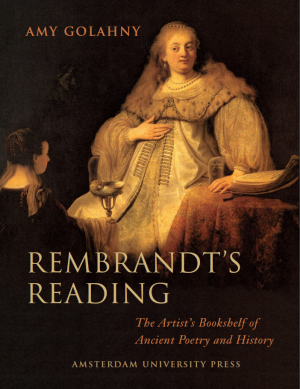Although Rembrandt's study of the Bible has long been recognized as intense, his interest in secular literature has been relatively neglected. Yet Philips Angel (1641) praised Rembrandt for "diligently seeking out the knowledge of histories from old musty books." Amy Golahny elaborates on this observation, reconstructing Rembrandt's library on the evidence of the 1656 inventory and discerning anew how Rembrandt's reading of histories contributed to his creative process. Golahny places Rembrandt in the learned vernacular culture of seventeenth-century Holland and shows the painter to have been a pragmatic reader whose attention to historical texts strengthened his early rivalry with Rubens for visual drama and narrative erudition.

